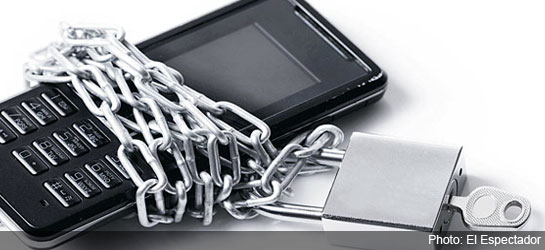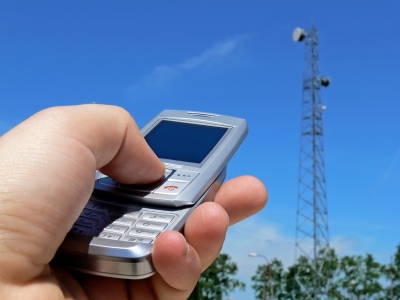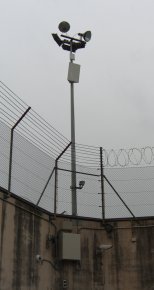This news tracks with reports elsewhere that this technology to block cell phone usage in prisons is problematic. An effective contraband cell phone strategy should focus on reducing demand, in addition to restricting supply. Corrections officials have shared with us the fact that at least 40% of the calls intercepted by these systems are to phone numbers on inmates’ approved calling lists. We suspect that an even higher percentage are to other family and loved […]
Detection
A cautionary tale for prisons contemplating shelling out millions of dollars for managed access systems to jam contraband cell phones. A prison in New Zealand has spent over $11M (US) in installation and upgrades on a cellular signal jamming system that has not prevented the ongoing use of wireless devices. Taxpayers have forked out $17 million on cellphone jamming technology for prisons – but inmates continue to be caught with increasing numbers of contraband mobile […]
The United Kingdom’s Ministry of Justice has determined that managed access jamming of contraband cell phones is too expensive and has commissioned “research to explore the use and demand for illicit mobile phones amongst the prison population” in order to facilitate the “development of a new mobile phone strategy to: (i) manage prisoner communications, (ii) reduce and control criminal activities and (iii) reduce expenditure on equipment and the need for time-consuming searches.” The aim […]
As we have written before, managed access cell phone jamming systems being tested in prisons around the world have been deployed with mixed results. In addition to requiring ongoing management and investment post deployment, they have a spotty record and not all vendor’s equipment works as advertised. Recently, the Cayman Islands issued a report on their managed access trial. According to the report, which is discussed in the article below, “The prisons service installed a […]
According to a recent article, managed access systems (MAS) are not plug and play. They require ongoing systems management and staff time. This means ongoing cost, in addition to the high cost and operational challenges of installation. The Mississippi State Penitentiary in Parchman was the first prison in the country to use the Intelligent Network Access Controller (iNAC), which blocks service for contraband cell phones inside the prison walls. Being on the cutting edge involved […]
Update: We have submitted our thoughts on this complex issue to the FCC. You can read them here and download the actual filing here. The FCC today issued FCC 13-58, Contraband Wireless Device Notice of Proposed Rulemaking (NPRM), to “remove barriers to the deployment and viability of existing and future technologies used to combat contraband wireless devices.” The NPRM discusses current technologies such as managed access, detection, jamming and wireless carrier service termination of identified […]
This news video discusses the use of a cell phone-sniffing dog, appropriately named, “Sprint”, to find smuggled contraband cell phones in Oregon prisons. The video includes a demonstration of Sprint’s skills at the Santiam Correctional Institution in Salem. Within seconds of the start of the demonstration, Sprint honed in on the scent of a cell phone hidden under an inmate’s pillow. According to the report, “High-end electronics such as cell phones have a unique odor. […]
According to this article, the GAO has just released a study on the use of contraband cell phones in federal prisons. However the Federal Bureau of Prisons (FBOP) has not put in place or developed evaluation plans to measure the effectiveness of new technologies to address the smuggled cell phone problem. In fact, according to the GAO report, “BOP has a policy, called Pilot Initiatives, Approval and Evaluation, that identifies numerous criteria that should be […]
The following editorial is a response to one written earlier regarding contraband prison cell phone signal jamming. In it the author, an official of the Maryland DOC states, “Corrections systems must invest, innovate, develop partnerships and educate themselves in order to gain the necessary capabilities to fight this problem.” This is very true, but all the approaches he mentions are related to smuggled cell phone interdiction and detection. None of the solutions contemplate proactively reducing […]
This article discusses how as prisons try to block unauthorized cell phone use, companies are developing systems that cost over $1 million to address the problem. This is cost that will be passed on to the taxpayer if prisons adopt this technology. By adopting the meshDETECT secure prison cell phone solution, prisons and taxpayers will avoid this cost and reduce prison cell phone smuggling and the value of contraband prison cell phones. The Bloods street […]
According to this news article, possession of contraband prison cell phones will be a felony in Alabama prisons and prison cell phone detection technology will be allowed if an Alabama bill passes. Rather than spend state funds on prison cell phone jammers, Alabama should consider a secure prison cell phone solution such as meshDETECT. A Senate committee today approved a bill that would give the state Department of Corrections new powers to keep cell phones […]
This is an excerpt from the FBI report “Cell Phones as Prison Contraband,” from the July 2010 FBI Law Enforcement Bulletin. It paints a compelling picture of the problems of contraband cell phones in prisons. The first reaction to a seemingly uncontrollable situation is often an extreme or complicated approach. In the case of contraband prison cell phones, it appears easiest to simply jam and block signals. The success of this approach is limited at […]












